Delta Blues
The author travels to south Louisiana for a rendezvous with blue-winged teal in the rich coastal marshes at the mouth of the Mississippi River
The author travels to south Louisiana for a rendezvous with blue-winged teal in the rich coastal marshes at the mouth of the Mississippi River
.jpg)
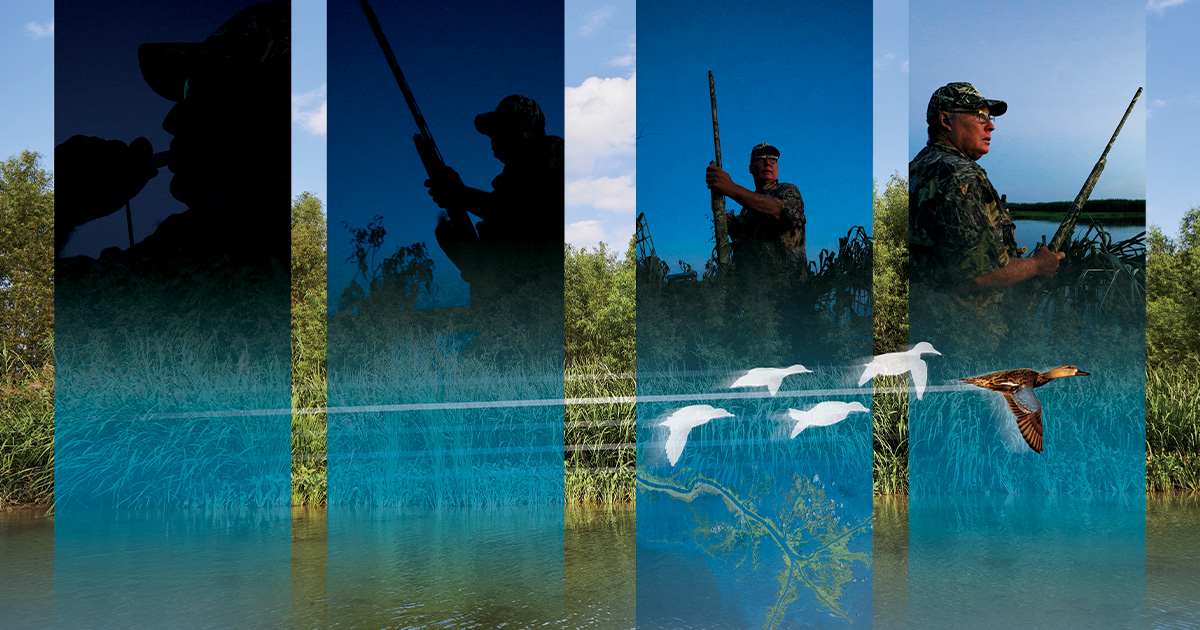
Pick your bird. That’s what the experts say. In other words, ignore the swirling, cartwheeling, circumgyrating flock of bluewings bearing down on you at 45 miles per hour. Simply pick one duck out of that vortex and stay on it, no matter what.
I know the drill. I’ve shot teal before. So I pick my bird and focus on my bird—my bird—with an intensity that almost hurts my eyes. But then my bird cuts through the middle of the flock, and then it swaps places with a duck on the far right, and then it zips through the maelstrom of beating wings to hover at the top of the flock for a half-second or so. It’s like playing a shell game at fast-forward speed. Now my bird is on the other side of the flock from where it started and my eyes have crossed three times and it’s time to shoot.
Care to guess what happens when I pull the trigger? I don’t want to talk about it.
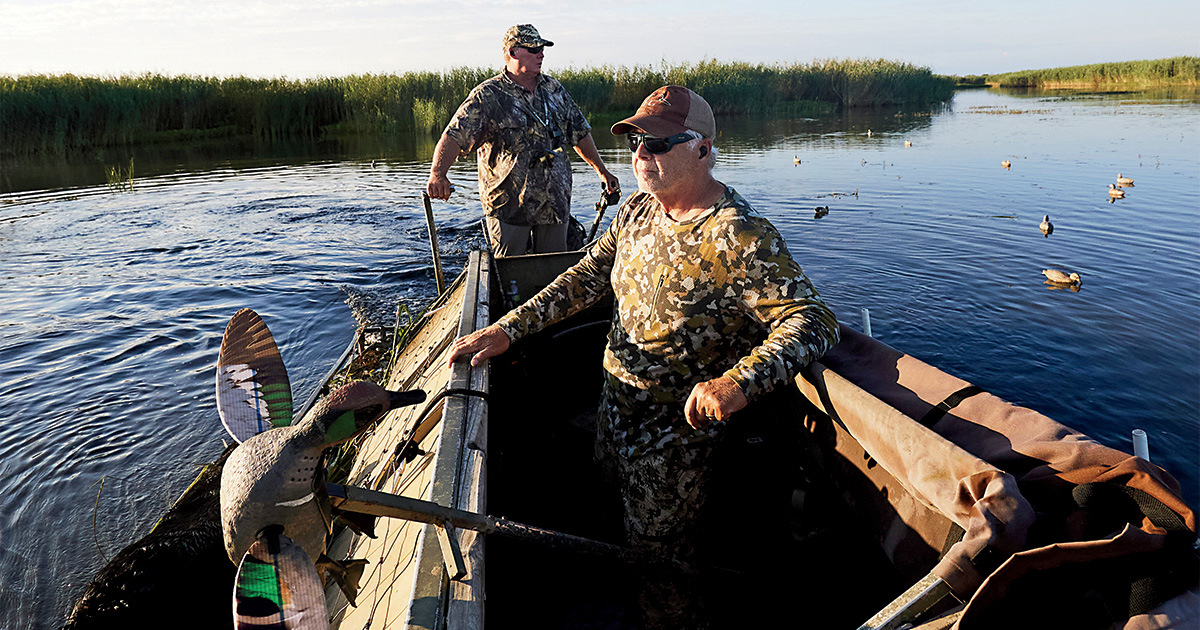
Outfitter and coastal wetlands proponent Ryan Lambert (at the tiller) and the author. Teal season is a prelude to the regular duck seasons, which begin later in the fall. Many waterfowlers look forward to this early opportunity to be in the marsh, though the speedy, acrobatic little birds can humble even the most accomplished shooters.
Every duck species has its own habitat niche—the wood duck in the hardwood bottoms, the black duck sailing into the salt marsh, the mallard drifting down through the fingers of tall oaks. For the blue-winged teal, its classic habitat seems to be inside my head. Playing with my brain. Messing with my mind. No other duck turns me into psychological knots as does this pint-sized Houdini.
Now eight bluewings land in the decoys before their appearance can even register with my hunting buddy and me. We look at each other with a how-in-the-world? glance. There are mottled ducks overhead, and wood ducks and pintails. The teal barely move, their heads up and alert. When they flush, we shoot them on the rise, their blue wing patches flashing like they’ve brushed up against the sky.
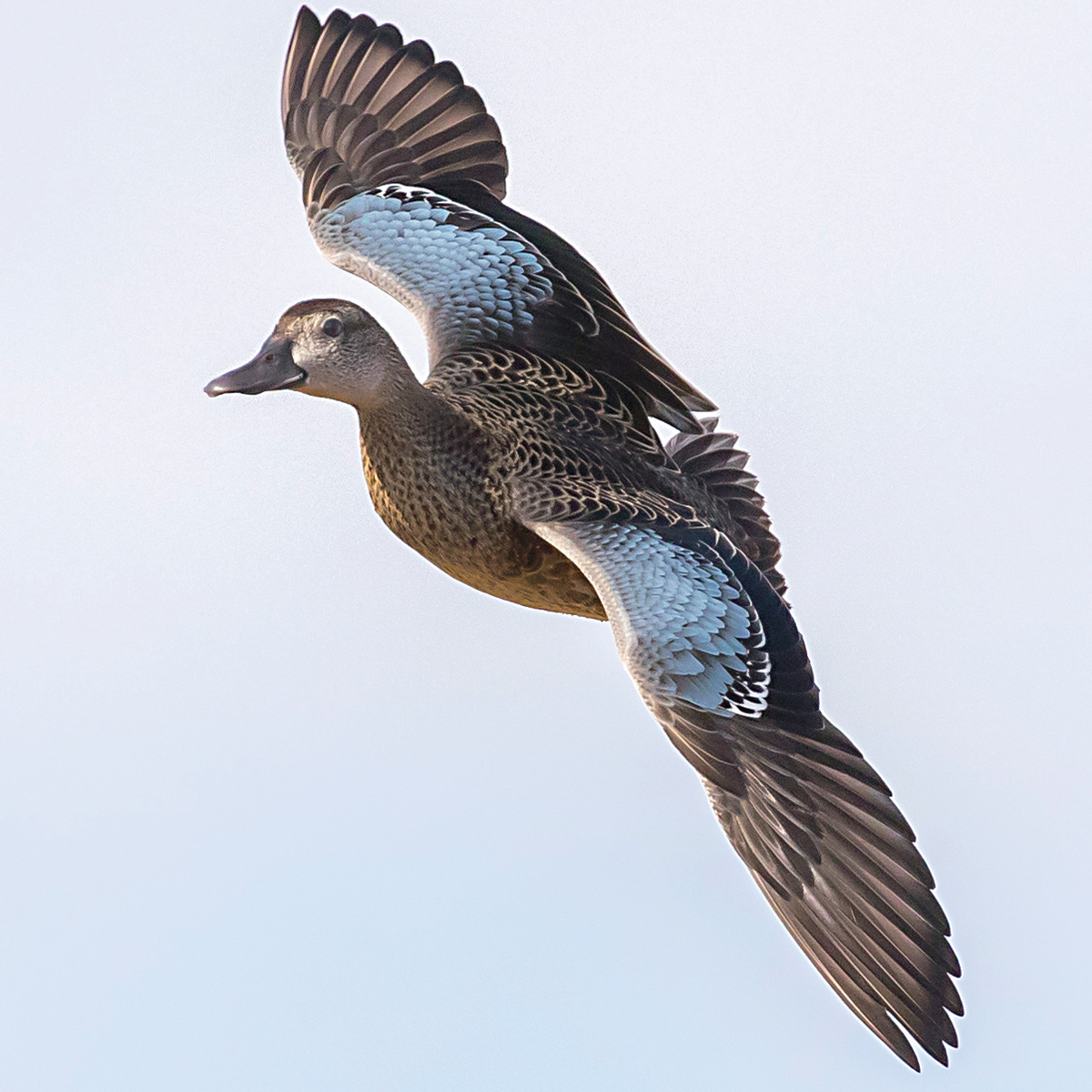
This time two birds fall, and Louisiana outfitter Ryan Lambert sends his black Lab, Kinley, for the retrieve as I scramble for more shells. Holy moly, have I already gone through half a box? Lambert watches his dog stroking hard and fast, and now there are black-bellied whistling ducks over the decoys and more teal plummeting into the arrowhead rushes—a.k.a. “Delta duck potato”—on the far side of the channel.
I’m shucking shells into the shotgun magazine when more teal appear.
“Oh, Lord,” croons Lambert. “Why do I love this so much?”
Yeah. What he said.
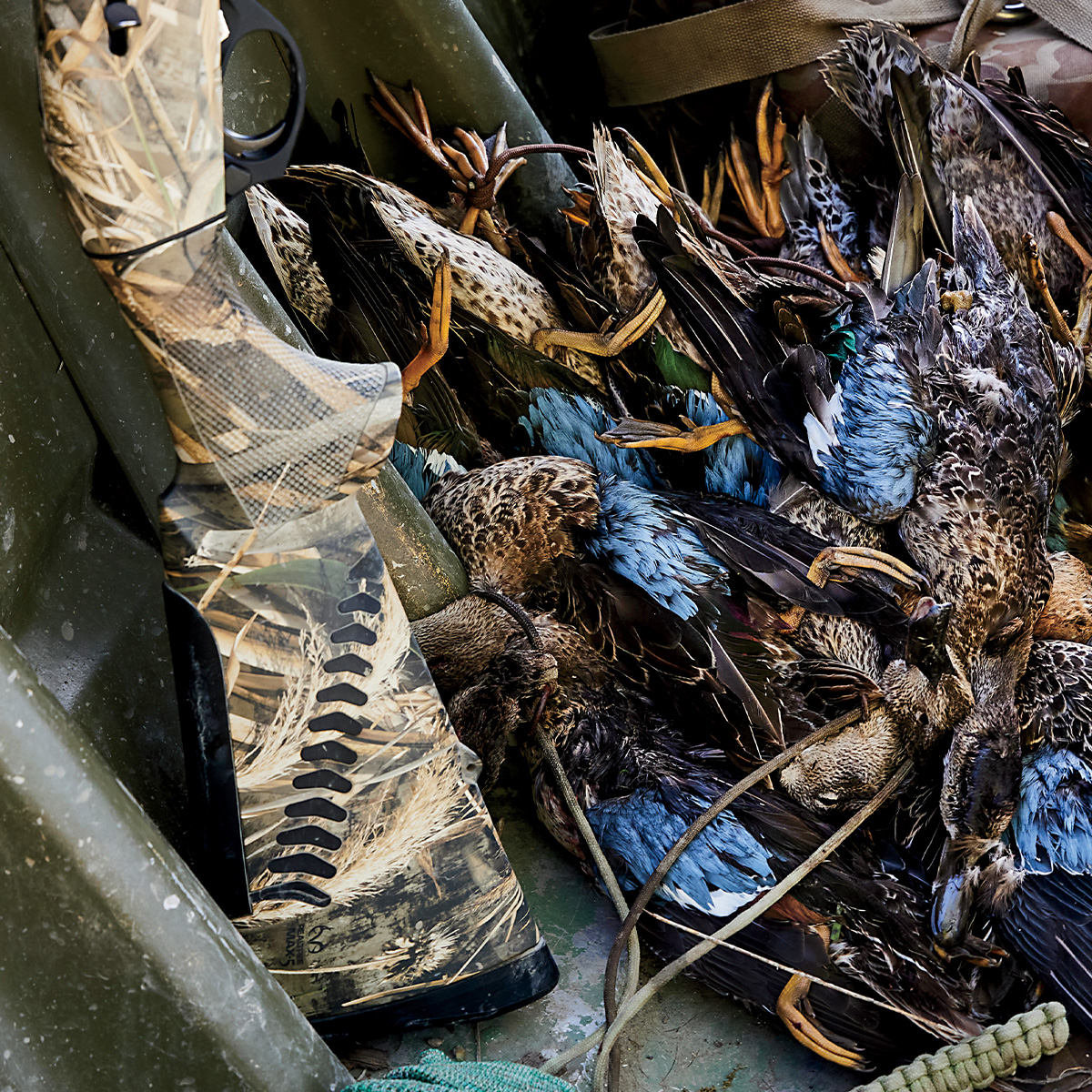
Blue-winged teal are among the first waterfowl to migrate in the fall. Many of them stop along the Gulf Coast to spend the winter or to rest before moving on to wintering grounds as far away as South America.
It’s as if the duck gods sat down one day to have a little chat: It’s been a long hot summer, friends, and those poor duck hunters still have a solid month or two to go before a real opening day. So, let’s make ’em a duck that migrates early, a beautiful little bird that’s easy to pick out among all the other birds. And we’ll make these birds especially tasty and have them arrive in flocks that inspire awe and wonder. And to keep those humans humble, we’ll give this duck blistering speed and the pinball antics of a squirrel caught in the middle of the road. That’ll keep them on their toes. Ah, yes, one more thing: Let’s add a bunch of mosquitoes to the mix.
What they came up with is Spatula discors, the blue-winged teal. To be honest, these ducks are a blessing and a curse. The blessing is that these pigeon-sized birds arrive early and show up with a lot of their friends. The curse is that “blue” describes how some hunters feel after these teal reveal how little they’ve practiced in the off-season. And for sure, “blue” describes the salty language heard when 20 blue-winged teal rocket over the blind and 20 blue-winged teal fly away unscathed. This is the second most abundant duck in North America—behind only the mallard—but they surely rank first in the frustration they produce in hunters unprepared for their speed and wiles.
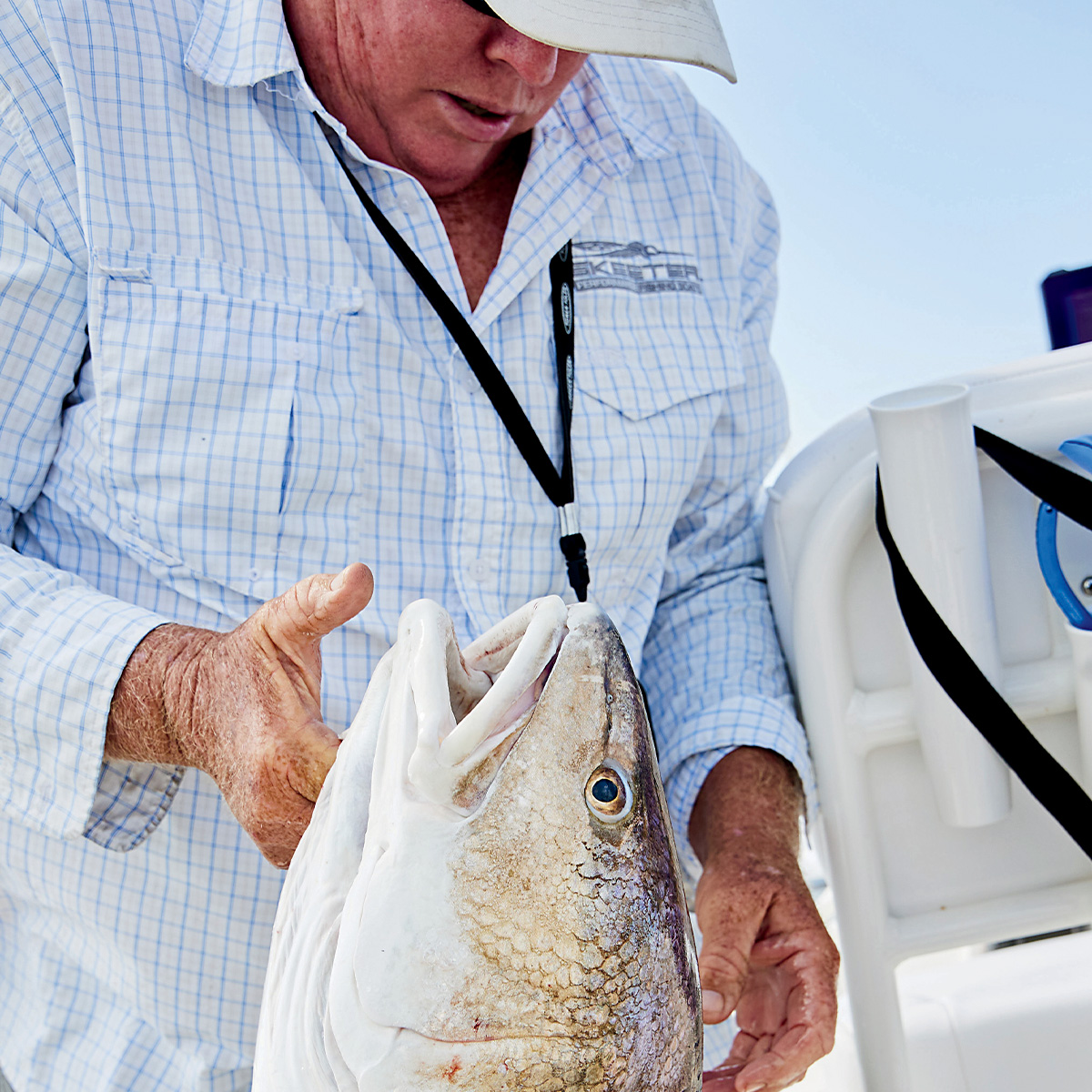
Waterfowl and many other fish and wildlife species, like redfish, depend on healthy coastal wetlands. DU and its partners are working to reverse the continuing loss of these valuable habitats.
I showed up in south Louisiana to hunt bluewings and chase redfish, a classic cast-and-blast escapade, all under the tutelage of Lambert, owner of Cajun Fishing Adventures in Buras, Louisiana. A former redfish tournament angler and current diehard ducker, Lambert is also a tip-of-the-spear conservationist. His work to help restore the tattered marshes of south Louisiana has won him accolades and praise, and his down-to-earth manners lend him plenty of marsh cred.
In September, and increasingly during the regular duck season, blue-winged teal are Lambert’s bread and butter, and he’s thankful that it’s a duck whose population is in fairly healthy condition. While the 2023 estimate of 5.25 million blue-winged teal was down 19 percent from the previous year’s numbers, the continental breeding population remained slightly above the long-term average. A huge chunk of that number checks into Louisiana’s coastal marshes each fall, either to spend the winter or to stop over during a longer migration to southern marshes as far away as Venezuela and even Brazil.
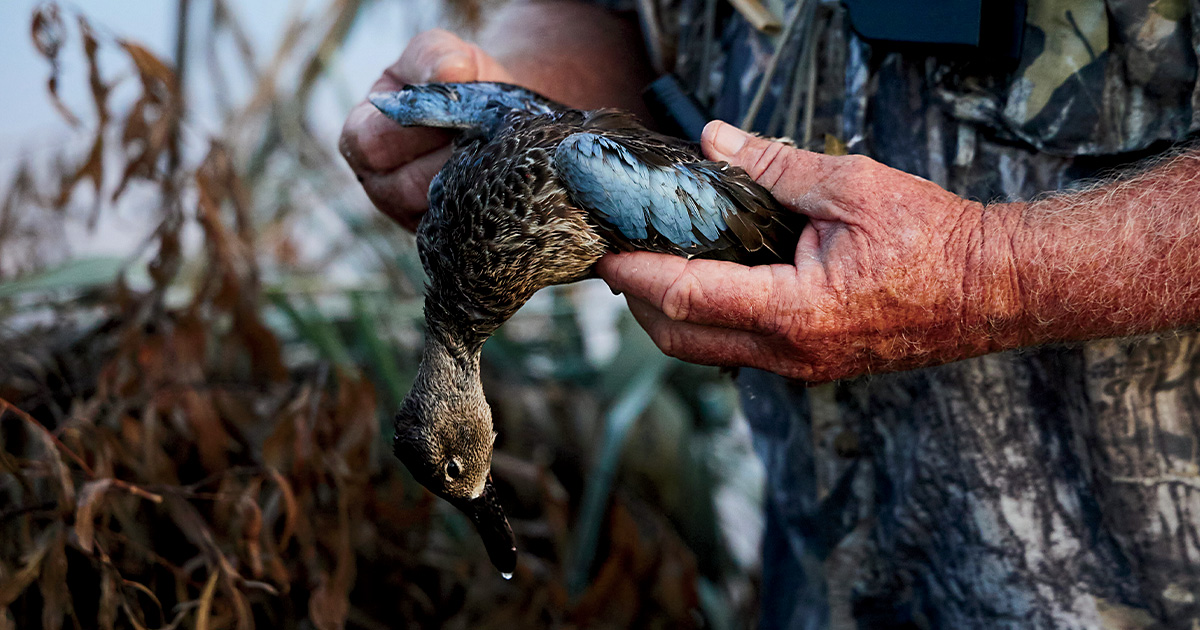
The blue-winged teal’s namesake powder-blue wing patches.
In most respects, teal hunting can be a fairly low-impact endeavor in terms of gear and tactics. We’ve set up in a small pond in the middle of a vast marsh, a wide spot in a long slough that gives approaching birds a pair of perfect runways between stands of roseau cane and duck potato. There’s a couple dozen decoys out, with a pair of spinning-wing teal decoys held in the thick mud with painted PVC poles. While mullet are jumping and knifing through the spread—only in south Louisiana do you have fish lending action to your decoys—Lambert calls at passing teal with buzzy four- and five-note decrescendo calls. “I got sweat rollin’ down my arms,” he grins. “I guess that’s how I know I’m teal hunting in Louisiana.”
True dat, as they say in these parts.
Another truism of coastal Louisiana is that this vast mosaic of marsh and salt pond and tidal creek and mud flat isn’t just for ducks. Birders would go nuts over the species we saw in that first morning in the blind. In addition to waterfowl, there were American avocets, glossy ibis, roseate spoonbills, magnificent frigatebirds, red-winged blackbirds, a smattering of raptors and shorebirds, and at least 136 species of herons. Or it sure seemed like that many.
And the region is, of course, revered by anglers. Redfish and blue-winged teal might seem like unlikely companions, but they share an affinity for intact coastal marsh, and their future in Louisiana is directly linked to efforts to restore the state’s coastline.
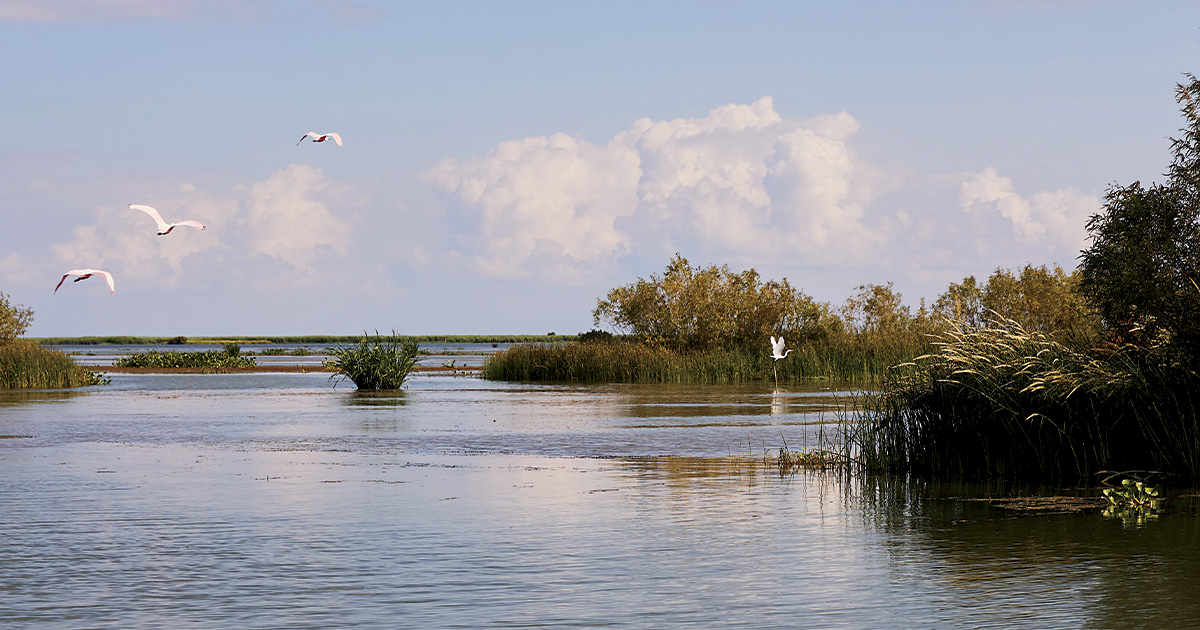
A healthy Louisiana marsh.
One afternoon we trade shotguns for fishing rods and strike out from Lambert’s place toward the west side of the Mississippi River to chase redfish. This is where marsh loss has been most dramatic. There are sweeping, open bays that used to be marsh. Today, Louisiana loses about a football field’s worth of marsh every 100 minutes, and it seems like we’re in the center of the worst of it. As we run through a gauntlet of pilings, Lambert cuts the outboard motor to an idle and says, “This used to be Bayou Chute. There was marsh on both sides, and there were camps on both sides of this little bayou, and folks would yell across the bayou, ‘Boy, come on over, we gonna fry some fish!’ People would cross back and forth in their little pirogues. I’ve seen this many times. People were born and raised in these camps and look at it now. Nothing but pilings surrounded by water.”
But there is much better news. On the east side of the Mississippi River near Bay Denesse, Ducks Unlimited has partnered with the North American Wetlands Conservation Council, Louisiana Coastal Protection and Restoration Authority, Chevron, Phillips 66, Cajun Fishing Adventures, National Wildlife Federation, and James M. Cox Foundation to enhance more than 2,500 acres of coastal habitat. The work has been a mix of cutting small gaps in the riverbanks to allow sediment-rich waters to fan out over the restoration area and the installation of water-control structures, living shorelines, and marsh terraces. It’s part of the $2 billion Mid-Barataria Sediment Diversion that could create 21 square miles of land over the next 50 years.
Lambert has been involved in the project from the start, and he’s convinced it’s working. On the east side of the river, he says, NOAA had to remove 31 lakes, bays, and bayous from its maps because they had simply vanished. On the west side, however, there are bayous that haven’t been named yet because the marsh is growing so quickly. This past April, Lambert led a team of friends and college students that planted 300 willows just to the north of Neptune Pass. Many of the trees have thrived and are already trapping enough sediments to create high ground.
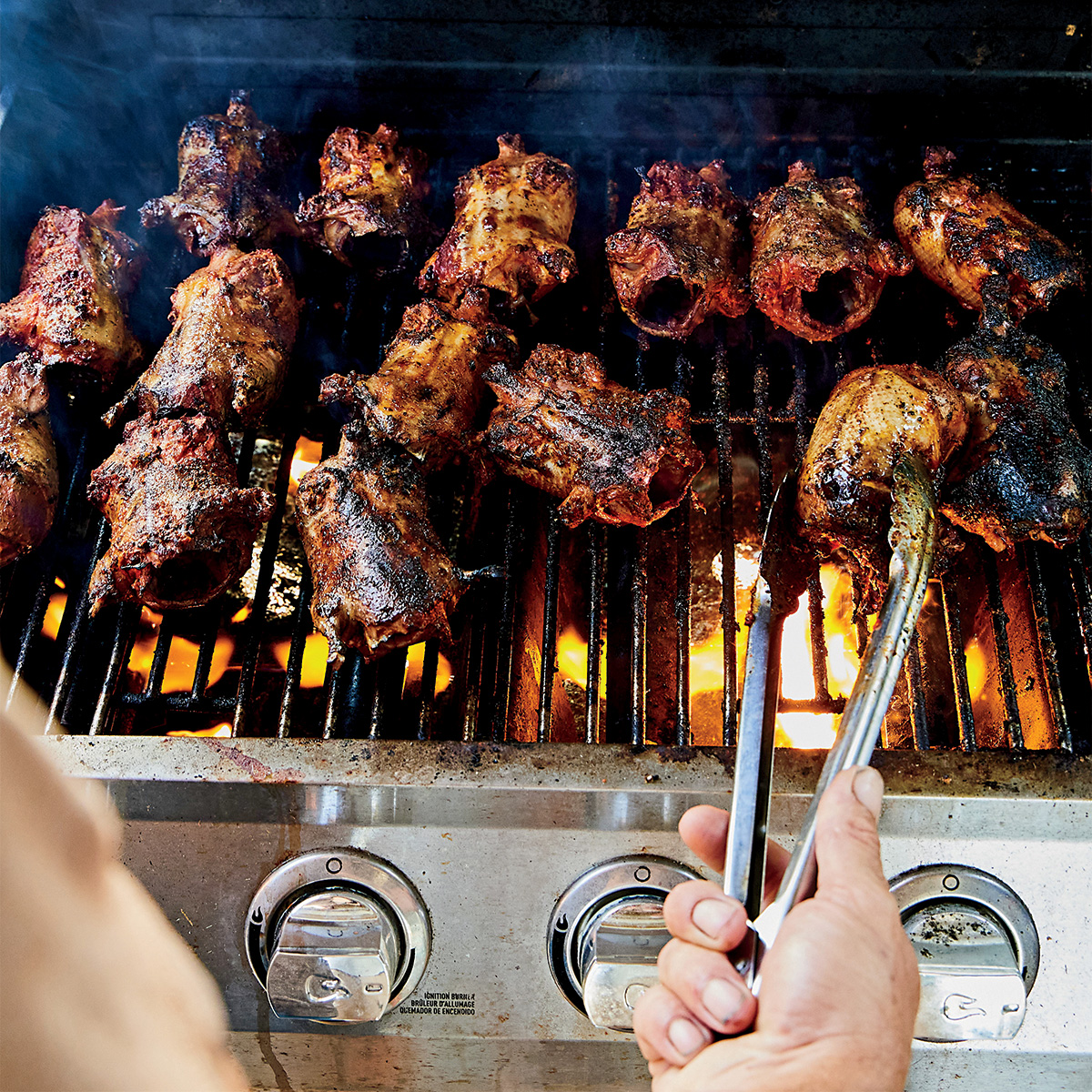
Grilling Mexican teal corazón.
At dinner the night before, Ben White, a guide and Lambert’s lodge manager, prepared Mexican teal corazón, grilling whole plucked teal glistening with a glaze of olive oil, salt, pepper, and paprika. As the flames licked the ducks, sending aromatic plumes of smoke through the outside deck, he described seeing dry land covered with those young willows where before there had been open water. “It blows my mind what they’re doing over there,” he said. “They’re actually making land.”
Which is a story you don’t often hear in terms of Louisiana coastal restoration.
“Put your heads on a swivel,” Lambert says. “The birds are starting to move now.” It’s our last morning in the marsh, and we’re at the blind early, watching heat lightning ignite the banks of clouds on the horizon with brilliant pink flashes. Lambert keeps his eye on the sky and breaks into a wide yawn.
“Oh, yes,” I say. “The third-day yawns. I know them well.”
He laughs. “Try it for 60 straight days,” he grins, “and get back to me!”
Now everyone is waking up. White ibis and glossy ibis croak as they wing over the roseau cane and bulrushes. Mottled ducks fly in silhouette, their slender forms and white underwings a giveaway. A few mosquitoes show up for the party, but far fewer than I expected. South Louisiana has a reputation as a mosquito paradise, but I typically run into relatively few. Hunt moving water, pushed by the tides, and the biters are nearly absent.
The marsh is decked out in a million shades of green, a primordial stew of life that chirps, whistles, croaks, and groans. Fish dimple and wake and jump. We’re so close to the Mississippi River that I can see the towers of huge ships move across the top of the cane like elephants on the horizon.
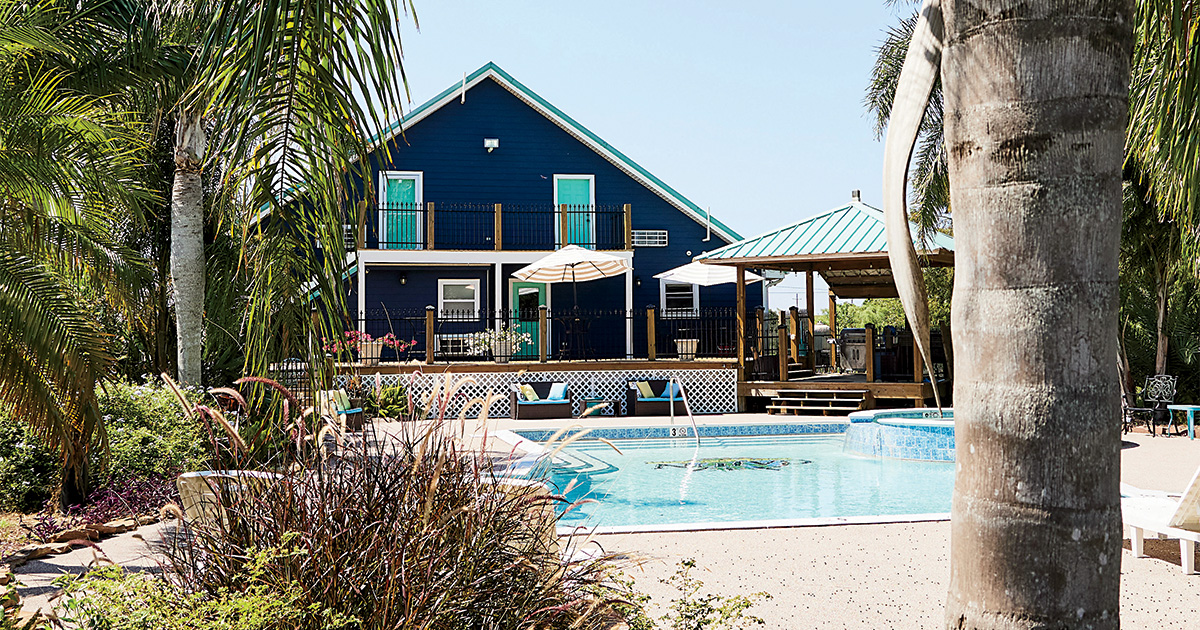
The lodge at Cajun Fishing Adventures.
But in blue-winged teal country, you can’t let your guard down for a split second. When the shadows of teal in flight cross the decoys, I grab the gun in a split second. The birds buzz us from behind, the sound of their wings ripping air arriving first. I’m swinging the barrel before the butt hits my shoulder, trying to catch up with the flock, trying to get the muzzle bead in front of the birds, trying to pick out my one single duck from the rest of the flock.
I empty the gun, the report of the last shot rolling across the marsh. Not a single bird drops. It’s silent in the blind for a moment, as a roseate spoonbill wings in front us. In the warm early light, its pink plumage is practically glowing.
“Look at that thing,” Lambert marvels. “You don’t see that by staying at home.”
He’s trying not to mention my three whiffed shots. Trying to make me feel a little better about my shooting. It’s a kind gesture, and I appreciate it. Because one thing is undebatable about these devilish little ducks: Blue-winged teal don’t care one whit about your feelings.
To book a trip with Cajun Fishing Adventures, visit cajunfishingadventures.com.